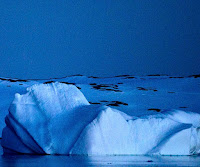Antarctica has reached record low temperatures in the past six months, data shows.
The National Snow and Ice Data Center (NSIDC) noted, CNN reported, "for the polar darkness period, from April through September, the average temperature was -60.9 degrees Celsius (-77.6 degrees Fahrenheit), a record for those months."
The time distinction from April through September refers to the period of polar darkness. In the case of the South Pole, this polar night occurs when the sun sets and darkness envelops the land, lasting from the spring equinox to the autumn equinox until the sun rises again.
In the winter of 2021, the continent of Antarctica experienced its second coldest winter and recorded temperatures in the months of "June, July, and August, [at] 3.4 degrees Celsius (6.1 degrees Fahrenheit) lower than the 1981 to 2010 average at -62.9 degrees Celsius (-81.2 degrees Fahrenheit)," according to the new NSIDC report.
"This is the second-coldest winter (June-July-August months) on record, behind only 2004 in the 60-year weather record at Amundsen-Scott South Pole Station," according to the NSIDC.
"The unusual cold," NSIDC noted, "was attributed to two extended periods of stronger-than-average encircling winds around the continent, which tend to isolate the ice sheet from warmer conditions. A strong upper-atmosphere polar vortex was observed as well, leading to a significant ozone hole. The ozone hole appears to have peaked as of this post, with initial measurements reporting that it is in the upper quartile (top 25%) of ozone reduction events since 1979."
However, despite the record cold, Antarctica has been experiencing extreme temperature fluctuations in the past few decades. According to Tom Slater, Research Fellow at the Centre for Polar Observation and Modelling at the University of Leeds, "although global temperatures have risen by about 1.1 degrees in the past 150 years on average, different parts of the globe have warmed at different rates due to natural variations in the climate system such as cloud cover, land cover, and atmospheric circulation patterns."
"Earth's poles have warmed faster than anywhere else, primarily due to melting ice and snow," Slater added. "Although Antarctica has had a cold winter this year, over the past few decades the most northerly parts of Antarctica have warmed five times faster than the global average — that's faster than anywhere else in the Southern Hemisphere."

No comments:
Post a Comment